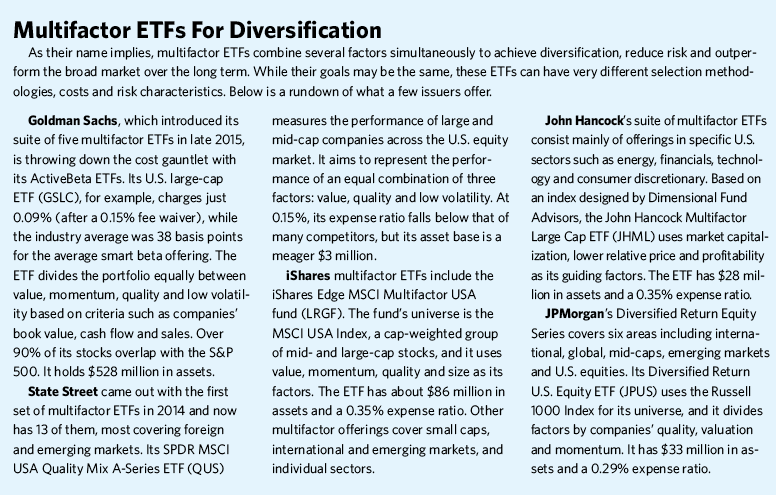While studies show that certain factors produce superior risk-adjusted long-term performance, there is no guarantee that history will repeat itself. Just as factors can outperform at certain times, they can underperform for long periods, and they tend to be highly cyclical. A recent example of both these points is value stocks, which have experienced a prolonged, multiyear performance drought even though they have a history of outperforming growth stocks over the long term. And if investors continue to pour into stocks with certain characteristics, such as value or low volatility, the performance attributes these names exhibited in the past may not occur in the future.
Finally, there is the question of implementation. Unless they’re using multifactor ETFs, investors need to determine which factors to use, when to use them and how to rebalance. Factor-based investing introduces a new way of thinking about asset allocation, but it also causes confusion about which ETF methodology is most likely to produce superior performance.
Issues such as these have raised skepticism about factor-based investing among some advisors. In his blog “Pragmatic Capitalism,” Orcam Financial Group founder Cullen Roche skewers it as “usually just a good marketing pitch to charge higher fees for something that will give you most of the correlation of a market-cap-weighted portfolio. ... If you can decide when that correlation shifts a tiny bit to give you some slice of outperformance, then you’re much smarter than me and everyone else in this business.”
Making it Work
Others believe that while factor investing is generally a good idea, investors need to use it judiciously. They offer these suggestions to make it work:
Diversify. Using several factor-based strategies at one time enhances diversification because each factor often follows unique cycles, says Andrew Ang, head of factor investing strategies at BlackRock. For example, quality tends to do well when the economy is doing poorly while low volatility tends to shine during times of market turbulence. On the other hand, factor cyclicality means that employing one factor exclusively or overemphasizing it increases portfolio risk. Ang adds that factor ETFs have elements of both active and passive strategies, and that investors can use them to replace core index exposure or as a lower-cost substitute for actively managed funds.
Avoid timing factors. AQR Capital Management co-founder Cliff Asness contends that trying to time investments to coincide with the superior performance of one factor or another is extraordinarily difficult, and that if investors decide to try to time factors they should do so sparingly in portfolios. “My suggestion to investors is to instead focus on identifying factors that they believe in over the very long haul, and aggressively diversify across them,” he says.
Consider time horizons. In a 2015 study, wealth management firm Northern Trust pointed out that factors such as size, value and momentum have long cycles of outperformance or underperformance that last eight years or more while other factors, such as low volatility, see periods lasting less than four years.
“Our research shows the choice of which factor to favor hinges on investment horizon,” the report concluded. “Investors with short horizons should avoid long-cycle factors that may underperform for extended periods, instead opting for shorter-cycle factors like dividend yield and low volatility. Longer horizon investors are better positioned to hold longer-cycle factors like value, size and momentum until their portfolio liquidation approaches.”









